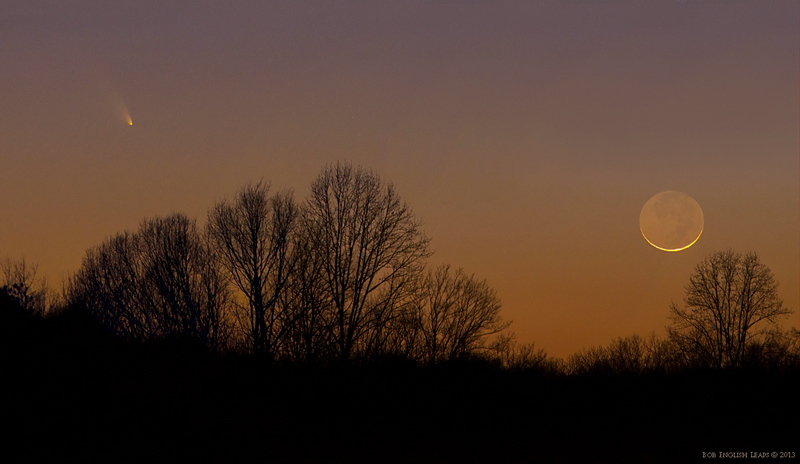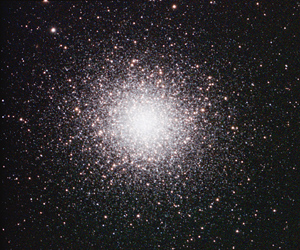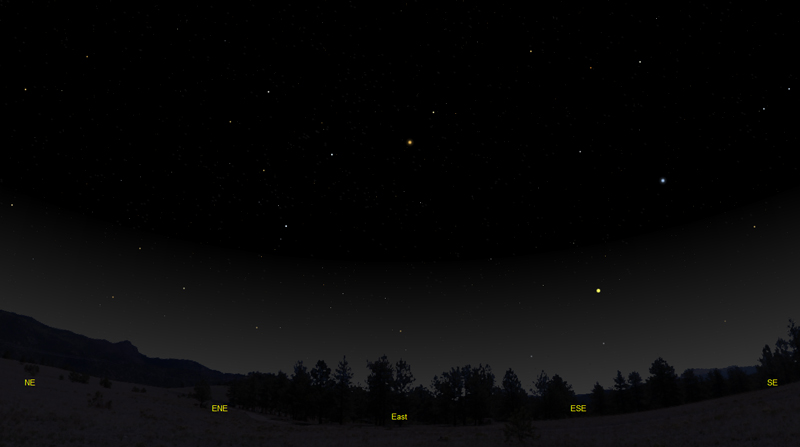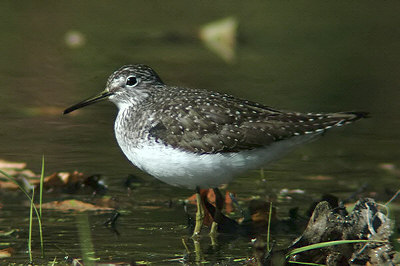The purpose of this feature is to give scout leaders, educators and naturalists an idea of some of the natural events coming up each month. We will try to cover a variety of natural events ranging from sky events to calling periods of amphibians, bird and mammal watching tips, prominent wildflowers and anything else that comes to mind. We will also note prominent constellations appearing over the eastern horizon at mid-evening each month for our area for those who would like to learn the constellations. If you have suggestions for other types of natural information you would like to see added to this calendar, let us know! Note: You can click on the hyperlinks to learn more about some of the featured items. To return to the Calendar, hit the "back" button on your browser, NOT the "back" button on the web page. All charts are available in a "printer friendly" mode, with black stars on a white background. Left clicking on each chart will take you to a printable black and white image. Please note that images on these pages are meant to be displayed at 100%. If your browser zooms into a higher magnification than that, the images may lose quality. Though we link book references to nationwide sources, we encourage you to support your local book store whenever possible. Notes and Images From March 2013
On March 12th, after having dinner at Montgomery Bell State Park, I set off to find a clear western horizon to image Comet PanSTARRS. I had only 30 minutes to find a spot and set up. Using information from Google Earth, I drove a small county road to the north of the park. I found a place just in time, at a crossroads bordering a field. I wasn't expecting much from the comet, as it was reported to be barely visible to the naked eye. But I was enjoying the prospect of spending my twilight time just trying to catch a glimpse of this one-time visitor. As the sky darkened I caught site of a beautiful one-day-old crescent moon. This is one of the youngest moons I've ever seen. Then, about 40 minutes after sunset, I saw the comet in my 10x50 binoculars. Small, to be sure, but pretty, with a short fan-shaped tail. Shortly afterwards some scattered clouds covered both the comet and the moon. Just when I thought my views might be over, the pair emerged from beneath the clouds. It was a beautiful sight, with the moon hanging just above the trees. The comet was barely visible to the naked eye. About this time, as I was taking images, a Barn Owl flew overhead in the darkness, calling four times. I had a feeling that I was trespassing on one of the owl's favorite hunting spots. I thought about a line from Thomas Gray's Elegy Written in a Country Churchyard;
“The moping owl does to the moon complain Less than a minute after the image above was taken the moon descended into the tree line. As I was walking back to the truck, the bright stars of Orion and Canis Major lit up the southern sky. The calls of Spring Peepers came faintly from a distant field. It had been a memorable evening, and I drove home feeling very grateful that I could still experience the quiet beauty of rural Tennessee. Great moments in nature, like comets, often do not return.
Sky Events for April 2013: The Lyrid Meteor Shower peaks on the morning of April 22nd. A bright gibbous moon will make meteors harder to spot. Evening Sky: Jupiter, still close to the bright star Aldebaran in Taurus, is about 30 degrees above the western horizon in the early evening. Binoculars, if held steady, will show the four Galilean moons when they are not transiting the planet or being eclipsed. Saturn rises about 9:12pm on April 1st in Libra. Saturn is approaching opposition on April 27th, and its apparent size is increasing. The rings are open to around 19 degrees, giving a beautiful view of the very dark Cassini's Division. To get the best telescopic views wait till the planet has climbed high above the southern horizon in the early morning hours. On April 1st Saturn transits at 2:42am. All times noted in the Sky Events are for Franklin, Tennessee and are Central Daylight Time.
Constellations: The views below show the sky looking east at 9:30pm CDT on April 15th. The first view shows the sky with the constellation outlined and names depicted. Star and planet names are in green. Constellation names are in blue. The second view shows the same scene without labels. Bright objects in the eastern sky this month include the stars Arcturus and Spica, and the planet Saturn. New constellations are Serpens Caput, the Serpent (Head), and Hercules, the Strongman. As spring progresses and Hercules rises higher in the sky, look for the globular cluster Messier 13 (M13), which appears like a small fuzzy patch of light about 1/3 of the distance from Eta to Zeta Hercules (see illustration below). A cluster of stars about 21,000 light years away, M13 can be made out with the naked eye in a dark country sky when the constellation is high in the sky. Binoculars will help pick it out.
On Learning the Constellations: We advise learning a few constellations each month, and then following them through the seasons. Once you associate a particular constellation coming over the eastern horizon at a certain time of year, you may start thinking about it like an old friend, looking forward to its arrival each season. The stars in the evening scene above, for instance, will always be in the same place relative to the horizon at the same time and date each April. Of course, the planets do move slowly through the constellations, but with practice you will learn to identify them from their appearance. In particular, learn the brightest stars (Like Arcturus and Spica in the above scene looking east), for they will guide you to the fainter stars. Once you can locate the more prominent constellations, you can "branch out" to other constellations around them. It may take you a little while to get a sense of scale, to translate what you see on the computer screen or what you see on the page of a book to what you see in the sky. Look for patterns, like the stars that make up the constellation Corona Borealis. The earth's rotation causes the constellations to appear to move across the sky just as the sun and the moon appear to do. If you go outside earlier than the time shown on the charts, the constellations will be lower to the eastern horizon. If you observe later, they will have climbed higher. As each season progresses, the earth's motion around the sun causes the constellations to appear a little farther towards the west each night for any given time of night. If you want to see where the constellations in the above figures will be on May 15th at 9:30pm CDT, you can stay up till 11:30pm CDT on the April 15th and get a preview. The westward motion of the constellations is equivalent to two hours per month. Recommended: Sky & Telescope's Pocket Star Atlas is beautiful, compact star atlas. A good book to learn the constellations is Patterns in the Sky, by Hewitt-White. You may also want to check out at H. A. Rey's classic, The Stars, A New Way to See Them. For skywatching tips, an inexpensive good guide is Secrets of Stargazing, by Becky Ramotowski. A good general reference book on astronomy is the Peterson
Field Guide,
A Field Guide to the Stars and Planets, by Pasachoff. The book retails for around $14.00. Starry Night has several software programs for learning the night sky. Visit the Starry Night web site at www.starrynight.com for details. The Virtual Moon Atlas is a terrific way to learn the surface features of the Moon. And it's free software. You can download the Virtual Moon Atlas here. Cartes du Ciel (described in the monthly notes above) is a great program for finding your way around the sky. It is also free, and can be downloaded here. Apps: We really love the Sky Safari 3 Pro application described here. For upcoming events, the Sky Week application is quite nice. Both apps are available for both I-phone and Android operating systems.
Amphibians:
In addition to earlier breading species like Upland Chorus Frogs, Spring Peepers, Southern Leopard Frogs, and American Toads, listen for Fowler's Toads, Northern Cricket Frogs and Gray Treefrogs. The early calls of Gray Treefrogs sound raspier than the normal trill, as if the frog needs to clear its throat. Listen also on warm days for American Bullfrogs and Green Frogs. Early April is also a great time to listen for the "yeeooww" calls of Pickerel Frogs. Recommended: The Frogs and Toads of North America, Lang Elliott, Houghton Mifflin Co.
Birds:
The spring migration builds very quickly in April. The neo-tropical migrants are too numerous to list here, but now is the time to get out in the early morning with a pair of binoculars and welcome the new arrivals for the day. Scan the edges of ponds and creeks for Solitary and Spotted Sandpipers. Early arrivals also include Black-and-white Warbler, Black-Throated Green Warbler, Louisiana Waterthrush and Blue-gray Gnatcatcher. Listen at dusk for young Great Horned Owls and Young Barred Owls, doing their raspy "begging" calls. Recommended: The Sibley Guide to Birds, David Allen Sibley The Sibley Guide to Birds of Eastern North America, David Allen Sibley An inexpensive guide for beginners is the Golden Guide for Birds.
Wildflowers: Some of our favorite Spring wildflower walks are: The south ridge at the Owl's Hill Nature Center in Brentwood, Tennessee. The Edwin Warner paved loop at the Warner Parks in Nashville or just about any trail in Warner Parks. The Angel Falls trail along the Cumberland River at the Big South Fork Recreational Area, near Jamestown, Tennessee.
Archives (Remember to use the back button on your browser, NOT the back button on the web page!) Natural Calendar February 2013 Natural Calendar December 2012 Natural Calendar November 2012 Natural Calendar September 2012 Natural Calendar February 2012 Natural Calendar December 2011 Natural Calendar November 2011 Natural Calendar September 2011 Natural Calendar February 2011 Natural Calendar December 2010 Natural Calendar November 2010 Natural Calendar September 2010 Natural Calendar February 2010 Natural Calendar December 2009 Natural Calendar November 2009 Natural Calendar September 2009 Natural Calendar February 2009 Natural Calendar December 2008 Natural Calendar November 2008 Natural Calendar September 2008 Natural Calendar February 2008 Natural Calendar December 2007 Natural Calendar November 2007 Natural Calendar September 2007 Natural Calendar February 2007 Natural Calendar December 2006 Natural Calendar November 2006 Natural Calendar September 2006 Natural Calendar February 2006
Natural Calendar
December 2005
Natural Calendar
November 2005
Natural Calendar
September 2005
Natural Calendar
February 2005
Natural Calendar
December 2004
Natural Calendar
November 2004
Natural Calendar
September 2004
Natural Calendar
February 2004
Natural Calendar
December 2003
Natural Calendar
November 2003
Natural Calendar
September 2003 Natural Calendar February 2003 Natural Calendar December 2002 Natural Calendar November 2002 Nature Notes Archives: Nature Notes was a page we published in 2001 and 2002 containing our observations about everything from the northern lights display of November 2001 to frog and salamander egg masses. Night scenes prepared with The Sky Professional from Software Bisque All images and recordings © 2013 Leaps |
|||||||||





